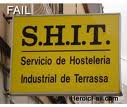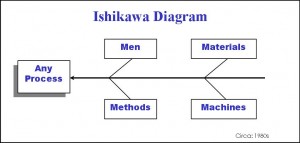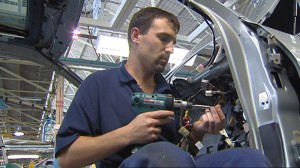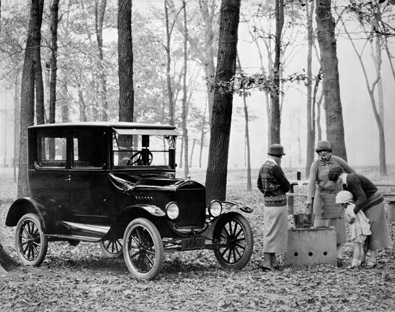
Have you seen “Undercover Bosses” on Channel 4 ? (9pm Thursdays)
In the series a number of company Executives go “undercover” to see how their business really works.
Last week it was David Clarke’s turn. David is the C.E.O of Hotel chain “Best Western” which doesn’t actually own any hotels but acts as an “umbrella brand” and booking agent.
David explained to his rather bemused board that he was going undercover for 5 days and would report his findings on his return.
David grew a beard and assumed an alternate identity.
He needn’t have bothered really because, despite a 1 million pounds marketing campaign, none of the staff had any clue what Best Western did or who they were.
David met a number of staff most of whom were extremely dedicated despite having to work extra hours unpaid and generally receiving just above minimum wage.
The funniest was the maintenance guy who clearly didn’t give a sh*t !
“Aren’t we going to fix that properly” asked David. “Nahh we’ll just move it to another room” – so that when the Best Western Inspector returned and checked the same room the offending item would be elsewhere and replaced by one from another room. Other shenanigans involved changing the room numbers on the Inspector’s report to confuse him on his return.
David, quite understandably, was not amused.
David returned to the boardroom to announce his findings – The Marketing Director was visibly shocked to hear that the advertising campaign had been particularly ineffective.
At the end of the show David anounced (in Secret Millionaire style) his true identify to the staff he had met during the show.
One Lady had worked for Best Western for 20 years. She earned around 6 pound per hour as a Cleaning Team Leader and regularly worked well over her standard shift for no extra recompense. During the show it transpired that her Son had spent some considerable time in Great Ormond Street Childrens hospital. Consequently David, in best philanthropist style, got out his chequebook. The Cleaner’s lip trembled and a loose tear rolled down her face as he wrote out a cheque for…….two and a half thousand pounds.
Best Western is part of the Interchange & Consort Hotels Group Ltd which is a private limited company and as such its accounts are not readily available in the public sphere in the same way that a PLC’s are. It is however one of the largest hotel chains in the Western world. One would have thought that a more generous donation would have been in order from such a “prestigious” organization rather than this rather tawdry sum.
The program highlighted a number of issues prevalent in many companies today:-
- A boardroom in the bunker mentality – completely out of touch with it’s own workforce and the issues it faces on a daily basis.
- A CEO living in a “bubble of bullshit” provided by his fellow Directors.
- Workers being exploited on minimum wage and working excessive hours.
- Workers with such dedication compared to their highly numerated counterparts in the boardroom it makes you seeth.
There is an old Management technique called “Management by walking around” which is exactly what it says on the tin.
Executives need to extract their heads from their own orifices and get out there on the shop floor and find out what the hell’s going on in their own organizations. Get out there and talk but more importantly listen to your own workers.
chris@projectsguru.co.uk
www.projectsguru.co.uk

 1) Create Space – nothing clouds judgement more than pressure to create a fast solution. Tell stakeholders you are assessing the situation and will provide an update in 1 weeks time.
1) Create Space – nothing clouds judgement more than pressure to create a fast solution. Tell stakeholders you are assessing the situation and will provide an update in 1 weeks time.


 chris@projectsguru.co.uk
chris@projectsguru.co.uk Don’t ask me what “Zen” is.
Don’t ask me what “Zen” is. Most people involved in
Most people involved in 



 First of all please let me apologize for the use of the word “buggers” which some of you may find offensive but I just couldn’t think of another term (apart from an even more offensive B term) to describe those people who are just plain damn awkward.
First of all please let me apologize for the use of the word “buggers” which some of you may find offensive but I just couldn’t think of another term (apart from an even more offensive B term) to describe those people who are just plain damn awkward.
 Henry Ford once commented that if he’d asked his customers what they wanted they would have replied “Give me a faster horse”.
Henry Ford once commented that if he’d asked his customers what they wanted they would have replied “Give me a faster horse”.
 Whilst the football may not have lived up to the hype so far we have still seen a couple of excellent team performances. So what is it that makes for a
Whilst the football may not have lived up to the hype so far we have still seen a couple of excellent team performances. So what is it that makes for a